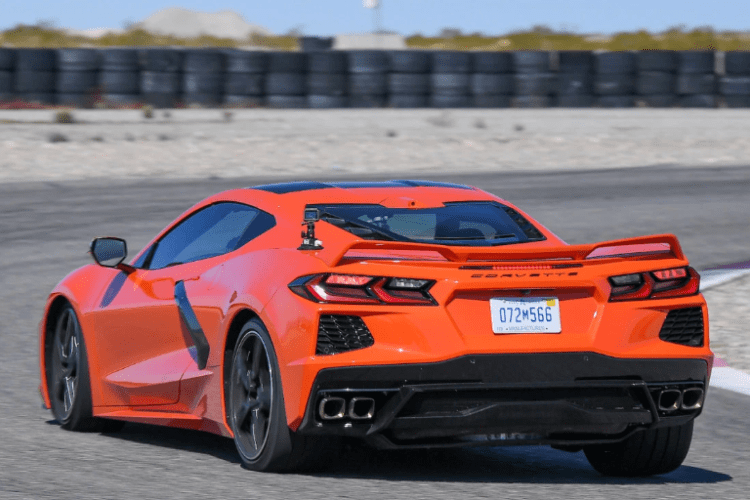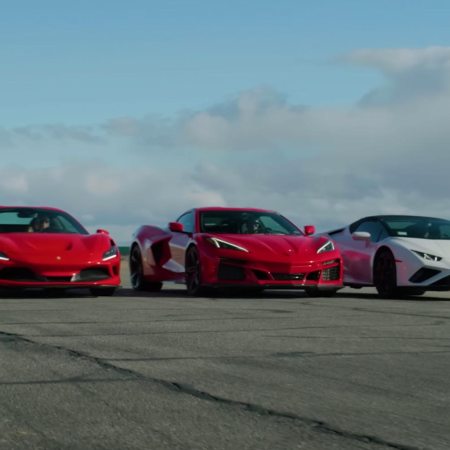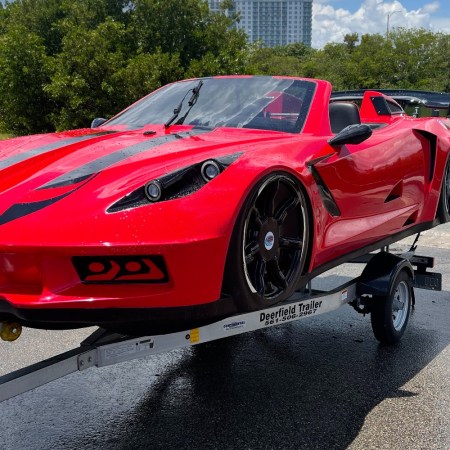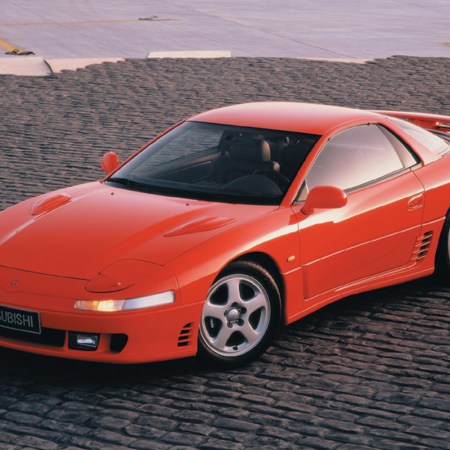In the automotive business, there’s shaking things up and then there’s agitating the Etch A Sketch so vigorously that you’re left with virtually a blank slate upon which to design your next vehicle. The 2020 Chevrolet Corvette has adopted the latter path, breaking from decades of tradition in a bid to elevate its competition level and finally earn more than a side-eye when parked alongside the various European exotica that have come to define the upper echelons of the sports-car market.
That the new C8-generation Corvette is different from those that came before is no secret, as General Motors had a hard time squelching the leaks and spy shots that paved the road prior to its official unveiling last year. After having spent time behind the wheel of Chevrolet’s all-new flagship coupe this past weekend, however, I can now confirm that the car’s personality shift is as dramatic as its radically reimagined styling suggests.
The First Mid-Engine Corvette
There’s one major factor dictating both the look and the driving experience offered by the C8 Corvette: the decision to move the car’s 6.2-liter V8 engine from the tip to the tuchus of its redesigned platform. That bit of automotive rhinoplasty has transferred the entire weight of the drivetrain to a snug spot immediately behind the passenger cabin, centering both the engine and the transaxle responsible for transmitting its output at almost the midpoint of the car.
I say “almost” because in truth, the 2020 Corvette rocks a 40/60 front-rear weight balance rather than a 50/50 split. Although mid-engine cars are often celebrated for their neutrality, Chevrolet made the decision to give the C8 an additional rearward bias in order to help with weight transfer during acceleration, planting more of the car’s mass above the back axle.
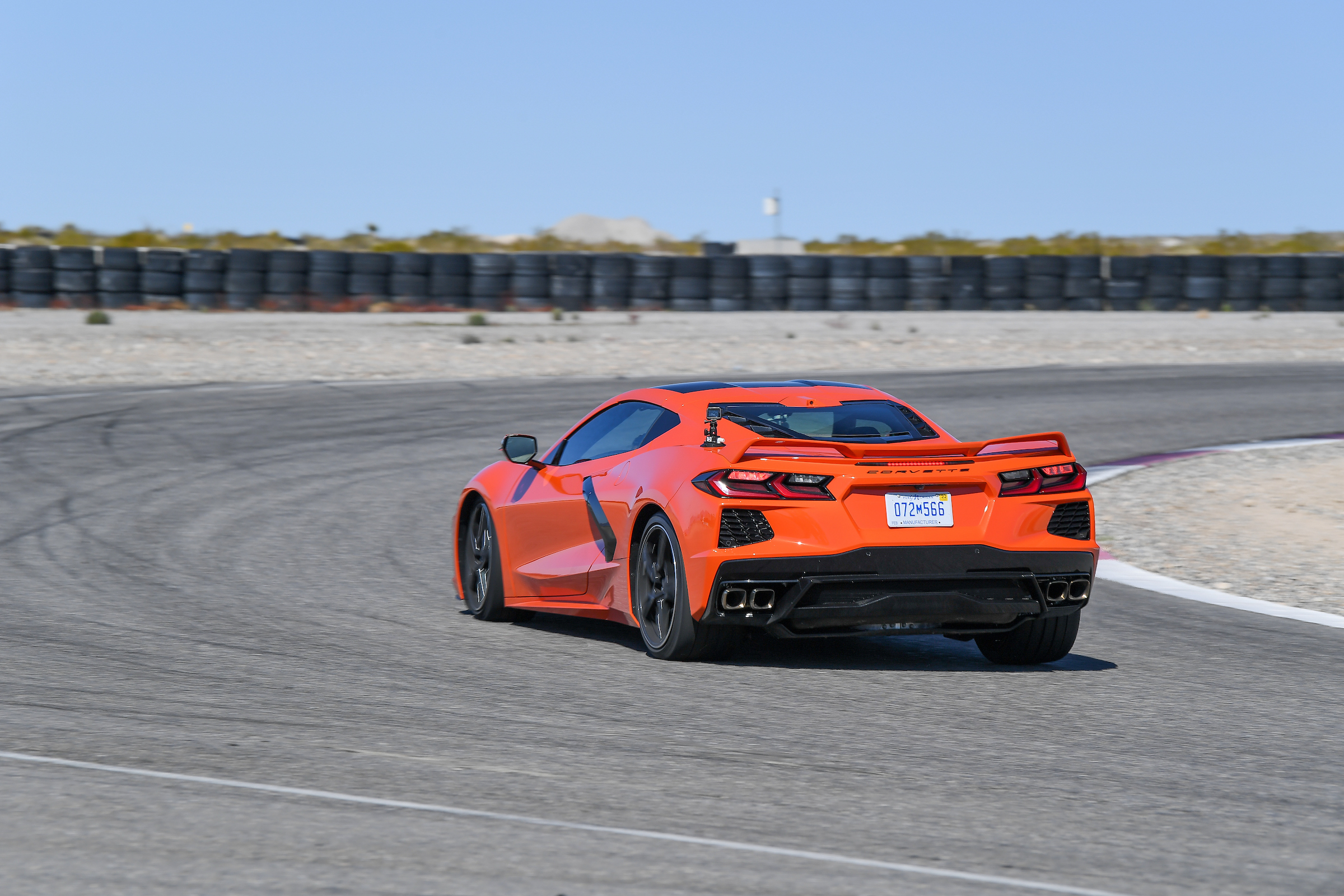
It certainly works: with the car’s launch control system activated (a simple stomp of the brake pedal and an equally enthusiastic accelerator application in the correct drive mode will trigger it), the car can reach 60 mph from a standing start in either 2.9 or 3.0 seconds, depending on which trim level you’re sampling. That’s nearly a full second faster than the car it replaces, which had its aluminum engine hanging out between the front wheels.
Credit also needs to go to the motor’s strong output, up to 495 horsepower and 470 lb-ft of torque when equipped with the vehicle’s available performance exhaust system. It’s a sizable step up over the 455 max rating of the C7’s similarly sized engine. A dry-sump oiling system — intended to preserve precious lubrication even as high-G corners threaten to suck oil away from the pan pickup in traditional designs — is also newly standard, and an eight-speed dual-clutch automatic debuts as the only available gearbox. The C8 is in fact the first of its breed to be sold without a manual transmission on the order sheet.
What It’s Like to Drive It at High Speeds on Closed Courses
Dive deeper into the 2020 Corvette’s dynamics and that mid-engine placement informs its driving experience in a number of other ways — not all of which will put the same kind of smile on your face as its phenomenal 0-60 sprint. Under hard braking, the rear of the car displays a kind of twitchy lateral movement entirely absent from the older C7, clearly a function of its hefty haunches. Throw in the additional 200 lbs. of curb weight brought by the mid-engine platform, and stopping distances are also up a tick versus the 2019 edition of the car.
Likewise, high-speed cornering now requires a completely different approach for Corvette drivers more used to the car’s traditional front-engine layout. Gifted with a remarkable stability, the C8 requires considerable trail braking to properly shift enough weight to its lightened nose for correct turn-in on a road course. Carry too much speed and the car is all too happy to push the outside tire towards the edge of the tarmac.
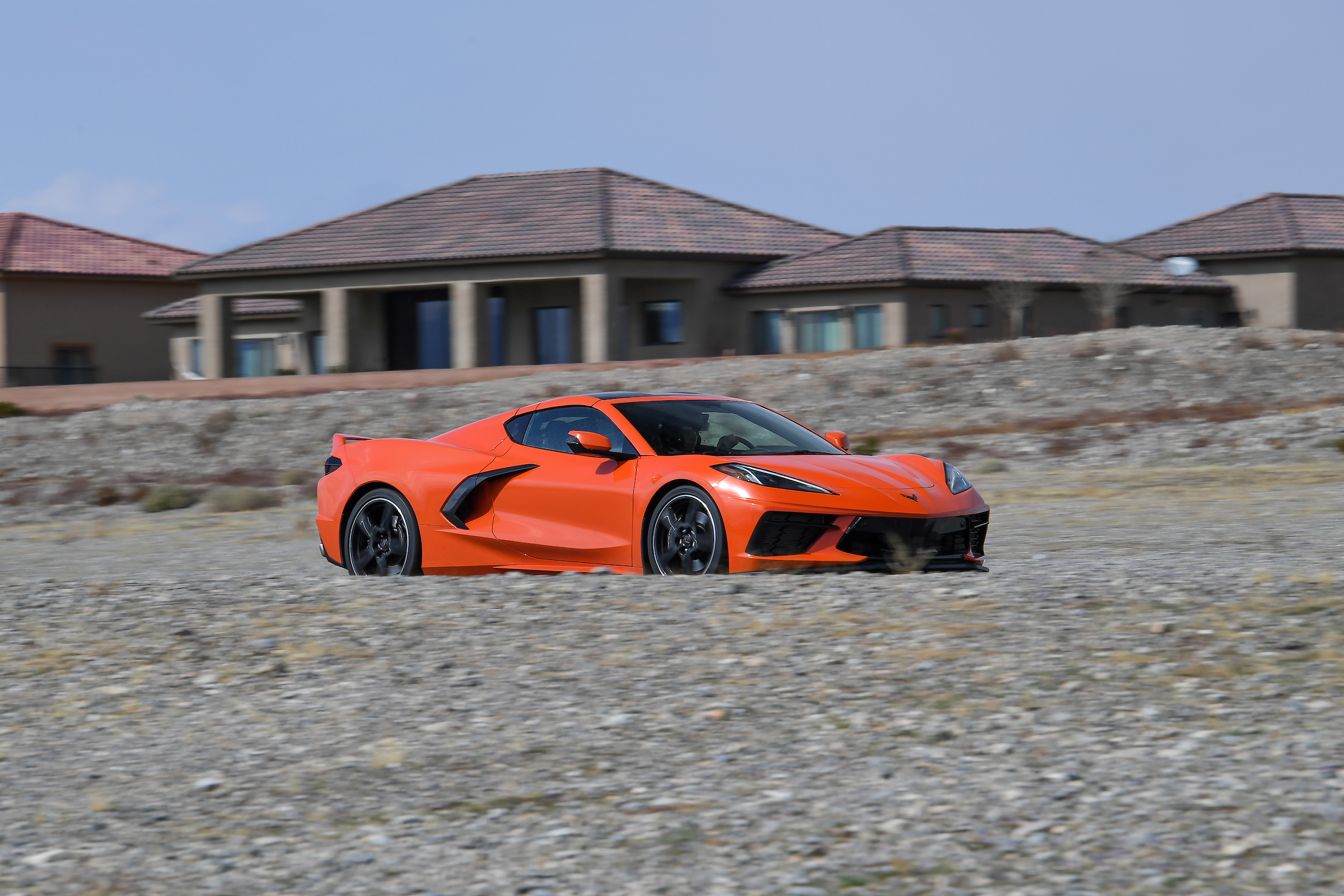
It’s also an order of magnitude more difficult to kick the rear out sideways either accidentally or accidentally-on-purpose in the new Chevrolet. The C8’s centralized mass is quick to correct/discourage any flagrant displays of buffoonery, although vehicles without the optional Magnetic Ride Control adaptive suspension (and its corresponding Performance Traction Management system) are a little easier to upset.
What It’s Like to Drive It Everywhere Else
It’s only logical that the daily drive has also been affected by the C8’s radical re-think, but it’s not just how the car feels behind the wheel that’s changed. One look at its dramatic body work and you’ll easily pinpoint the areas where the new Vette differs from the ownership experience traditionally offered by the automobile.
The C8 inverts the standard long nose/short deck design that has dictated Corvette proportions since 1953, replacing it with a snub nose and extended hindquarters that are immediately arresting to the eye, whether or not its standard removable targa top is in place. With the engine in the middle (and visible under transparent louvers), Chevrolet’s designers had the opportunity to add in extra storage at the front of the car, as well as include a deep well at the rear suitable for hauling the golf clubs, hunting rifles, or if you’re willing to forgo everything else, the entire roof panel.
From inside the car, the immense pillars climbing up from the rear flanks to the roofline make for massive blind spots on either side that are particularly galling when attempting to park. The slit through which the rearview mirror peers is also problematic, which is why Chevrolet has installed its camera-based rearview system (which works fine as long as the top is on and the screen isn’t washed out by the sun).
It’s the cabin itself that will startle even ardent Corvette fans the most. Rather than the comparably open habitat of the C7, the C8’s layout separates driver and passenger by way of a curved console panel. Festooned with the car’s climate controls, there’s more than a little claustrophobia on the right side of the vehicle, as well as limited ability for riders to interact with the Corvette’s infotainment system (or to avoid accidentally turning the defrost on at full blast with an ill-timed elbow).
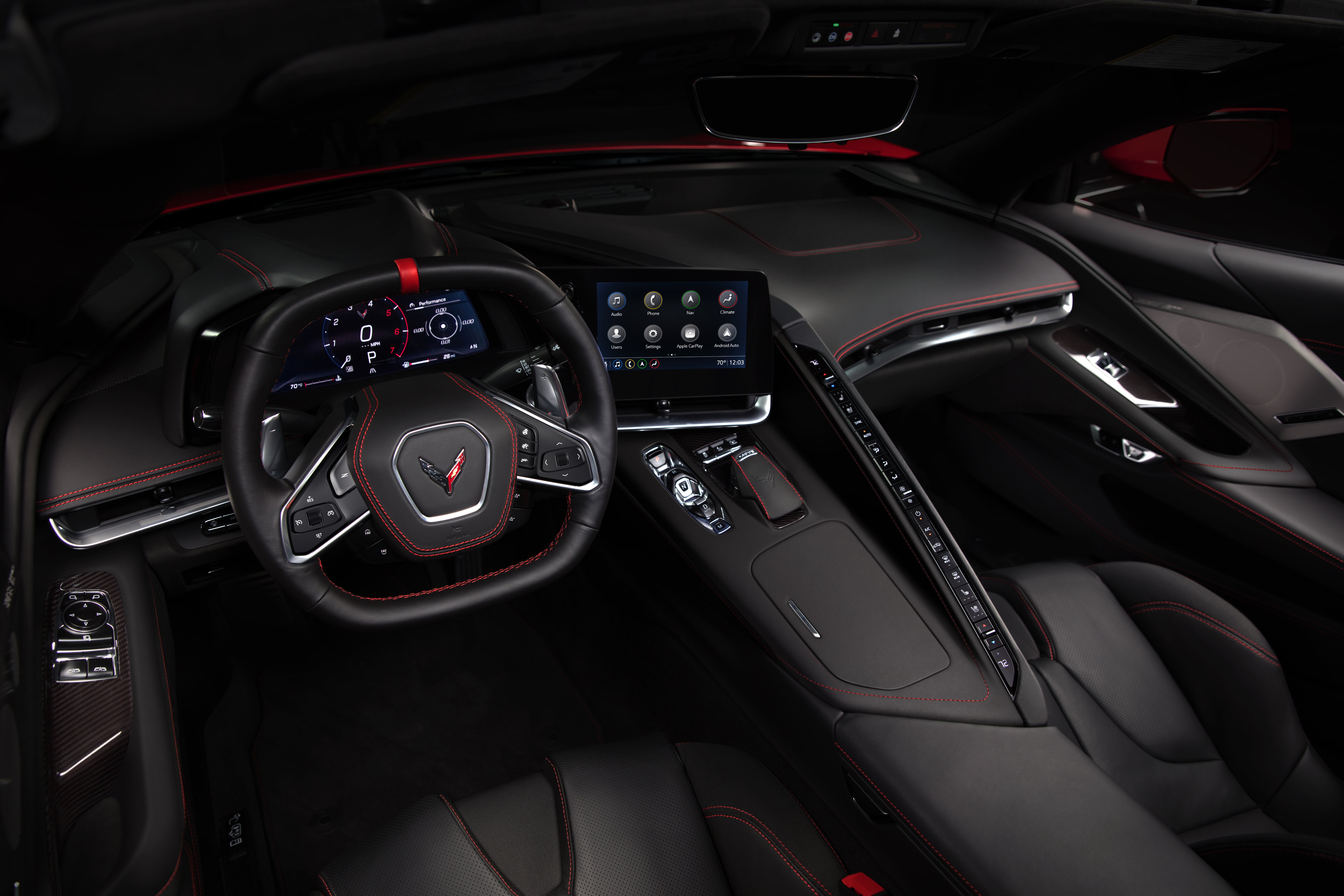
For the driver, there’s a bit more space to stretch out, and for the most part the car’s controls fall readily to hand. Materials used throughout the interior feel like a mix of high-quality leather and curiously large plastic speaker panels separated by discrete carbon fiber-look accents.
The Final Word
It’s clear that the edict passed down to the 2020 Chevrolet Corvette’s engineers was “make this car as easy to drive as possible.” Seen from that perspective, the C8 is a roaring success, a point-and-shoot street toy that offers exceptional long-distance comfort that mixes well with the track-friendly add-ons available through the Z51 package.
It’s also undeniable that its new mid-engine proportions give it a kind of visual cachet that elevates it into the pantheon of cars that can’t be ignored. When driving the C8 through the streets of Las Vegas — a city that regularly sees supercars flossing up and down the boulevard — I was filmed, photographed and accosted by sidewalkers more than in any other vehicle I’ve driven in the past year. There’s an inescapable heat emanating from the latest Corvette that the previous generation simply never managed to achieve in the popular consciousness.
And yet, there are letdowns, too. That the car offers exotic-like looks is undeniable, and its sub-$60k starting price makes it a bargain for anyone shopping for a 194-mph top speed, but its personality behind the wheel is much more conservative than anything similarly shaped from Europe offers, no matter how similar their on-paper specs might appear.
It’s this stepping away from the rambunctious, tire-smoking rawness of Corvettes past that truly separates the C8 from its heritage. None of its sensational curb appeal translates into the car’s driving experience, which comes across as a carefully controlled portion of performance with which it’s difficult to make any kind of emotional connection. The best word to describe the new model is “competent,” and I struggled to find a way to truly engage with — much less be swept away by — the C8’s package.
It’s not easy to make nearly 500 horsepower seem tame, but the 2020 Corvette has done a thorough job of achieving just that. That won’t be a problem for some of the Vette faithful, who will gladly enjoy its combination of high-key road presence and low-key driving character, but for the rest of us, we’ll be looking forward to the upcoming mega-muscled Z06 model giving us enough gumption to truly explore the limits of what the C8’s revolutionary platform.
This article was featured in the InsideHook newsletter. Sign up now.

